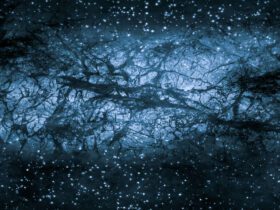A 1,220-kilometer (760-mile) sphere of solid inner core sits deep beneath the Earth’s crust, past the dense mantle and liquid outermost layer.
However, a new study claims that the innermost core is neither a liquid nor a solid, but rather forms a ‘superionic state’ containing hydrogen, oxygen, as well as carbon, leaving it neither a liquid nor a solid.
We know the inner core is mushy and has a small shear velocity from seismic wave data, therefore it can’t contain solid iron or iron alloy. Some scientists believe there might be a second innermost core, while others believe there might be still other light elements like an alloy due to the lower density than pure iron alone.
However, a new study led by Yu He of the Chinese Academy of Sciences has looked into the probable phase of matter that this mix of elements could reside in, and found that the solid state of the core could actually be a superionic state.
Superionic is a state of matter, along solid, liquid, and gas, but it differs from the others in several ways. Intense heat and pressures split apart every water molecule in superionic water, resulting in the oxygen ions becoming a solid, whereas the hydrogen ions drift around rather like a liquid.
The scientists ran computer models to see how seismic waves may travel across varying configurations of elements in the Earth’s hot inner core and determined that iron alloys containing carbon, hydrogen, and oxygen may work in an identical way as superionic water.
Inside the crystalline lattice structure, the iron atoms were solid, whilst the carbon, hydrogen, plus oxygen molecules diffused through the media, resulting in a liquid-like element.
The paper’s conclusions provide a great basis for this softer, less compact pure iron, but they don’t address another point about the inner core: why it appears to be unequal throughout.
The findings were reported in the journal Nature.












Leave a Reply